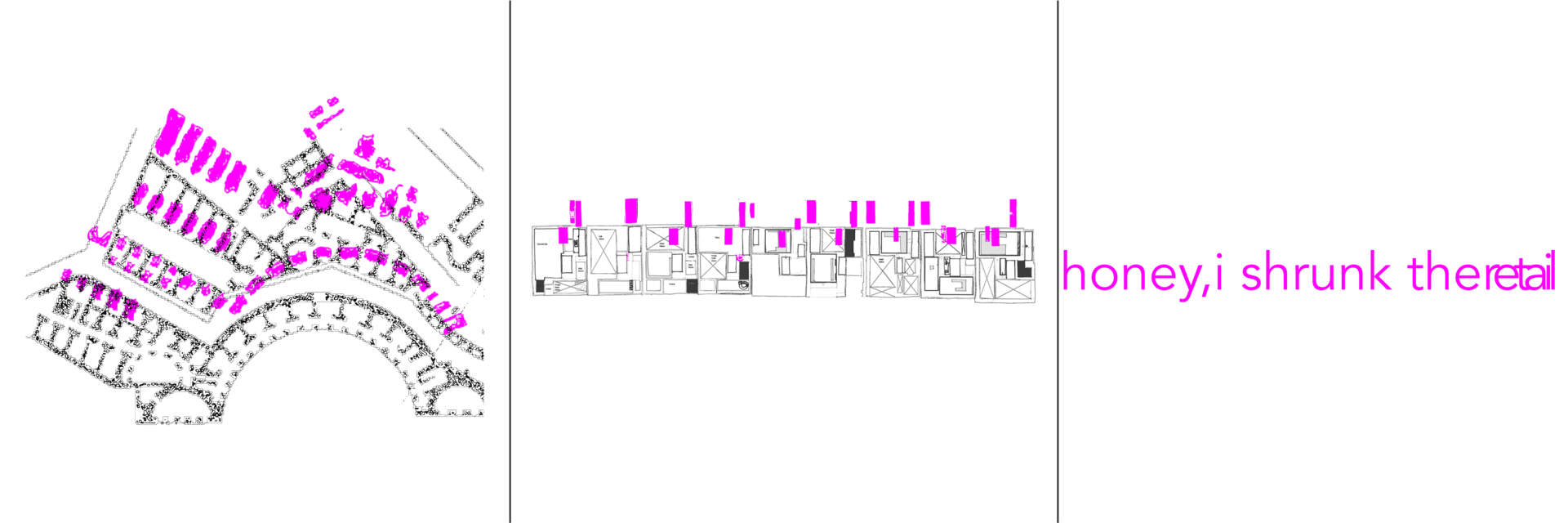Bhakti Sharma (b. 1980)Honey, I shrunk the retail
2018
mixed media collage
10 x 30 inches
Lent by the artist
Artist’s Statement
My subject matter is retail design, specifically in flagship stores. Flagship stores are retail environments where sales have become secondary to experiential, social, and branding functionalities. Their branding functions are brand awareness instrumental in creating a new market, brand loyalty for nurturing existing relations, or brand reverence in proposing a ‘shrine’ for dedicated followers. It is here in a brand’s flagship that the retail store “becomes a temple, a cathedral with all the trappings of a sacred, awe-inspiring place.” (Webb, 2001)
In my on-going study of retail stores’ layouts and plans, I found that flagship stores are 8 to 10 times larger than a store by the same brand. However, the retail functionality in flagship stores is only between 20-30% of the space. The size of the flagship store is inversely proportional to the retail functionality of these spaces. The majority of their space is used to create and provide an experience. In another study, I looked at the earliest beginnings of retail—the Trajan markets in ancient Rome—where the occupied retail area spread over three floors. Areas of today’s flagship stores for luxury brands are spread over 6 to 10 floors. Using pink in Honey, I shrunk the retail, I compared the space used for retail in the Trajan markets (shown on the left) with the Louis Vuitton flagship store in Tokyo (shown on the right). The abstracted pink forms are a lot denser in the Trajan markets where retail was conceived, and a lot lighter in the Louis Vuitton flagship store, where less space is allocated to retail which has been displaced from its center. In this graphic representation, the idea of ‘displaced retail’ is portrayed. Buildings that have historically been utilized for retail functionalities are now making the retail function secondary to the experience function. What is next and where are we heading?
